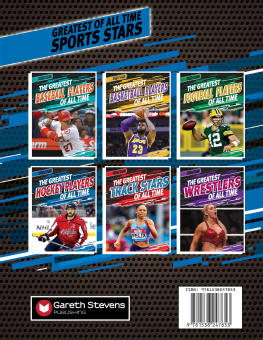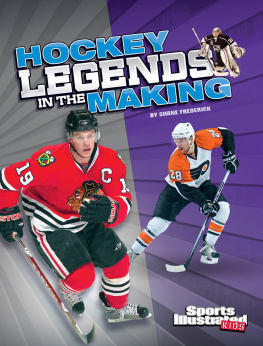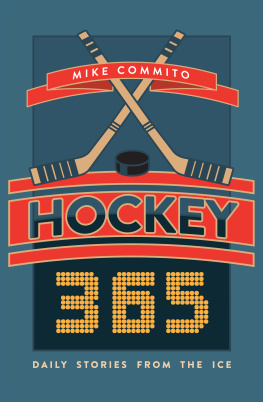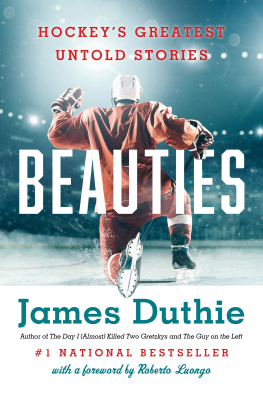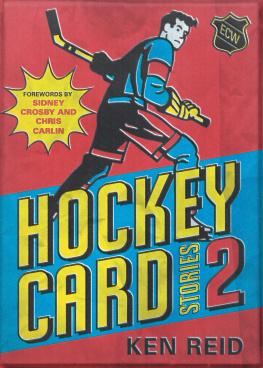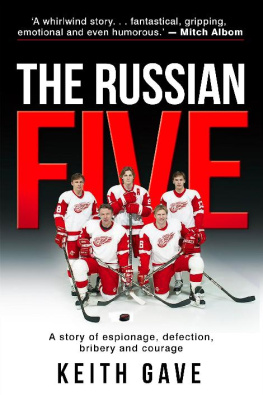Because this project was so contingent on the help of so many incredibly generous people, compiling this list was almost as daunting a task as writing the actual book. I'll do my best to remember everyone.
None of this would have been possible without the time and cooperation of my countless interview subjects, most of whom were incredibly candid in recounting the brave and historic acts in which they were involved. Thanks so much to Mort Greenglass, Peter Stastny, Anton Stastny, Marcel Aubut, Gilles Leger, Slava Fetisov, Alexei Kasatonov, Lou Lamoriello, Dimitri Lopuchin, Jack McIlhargey, Miro Frycer, Michal Pivonka, Lynda Zengerle, Petr Klima, Jim Lites, Nick Polano, Darren Elliot, Neil Smith, Jacques Demers, Frank Musil, Ritch Winter, Lou Nanne, David Durenberger, Glen Sonmor, Petr Svoboda, David Volek, Petr Nedved, Don Luce, Igor Kuperman, Charlie Pekarec, Mike Smith, Rick Dudley, Sergei Fedorov, Alex Gertsmark, Ken Daneyko, Bill Watters, Craig Laughlin, Jan Filc, Stewart Malgunas, John Whitehead, Turner Stevenson, Alexander Tyjnych, Marshall Johnston, Lev Zarokhovich, Glen Ringdal, Russ Farwell, David Luksu, and Robert Edelman.
Naturally, in my efforts to get in touch with subjects for this book, I encountered several helpful people along the way who were kind enough to point me in the right direction. There are more of these individuals than I could possibly fit onto these two pages but I'd particularly like to extend my thanks to Mark Janko, Todd Sharrock, Kevin Wilson, Louise Marois, Zack Hill, Jeff Alstadtler, Mike Sundheim, J.J. Hebert, Aaron Gogishvili, Jan Rachota, Mandy Gutmann, Sammy Steinlight, Rita Parenteau, Matt Conti, Ian Henry, and Michael Frazier.
I'd especially like to thank Vadim Kostyukhin, my good friend and brother-in-law, who helped tremendously in facilitating my research for this book. Of course, none of this would have been possible without the help of John Wiley & Sons Canada, Ltd., most notably the work of Karen Milner and Jeremy Hanson-Finger. And it all began with the help of my agent, Arnold Gosewich, whose advice and expertise proved invaluable throughout this process.
Finally, I would be remiss, not to mention a bad person, if I didn't take a moment to thank my friends and family. Most notably my wife, Mary, my parents, Marcel and Pnina, and my sister, Sarah, whose belief and encouragement propelled me forward through the most trying times. Love you, guys.
When you grow up as a hockey fan in Montreal, the Canadiens aren't just the subject of a childlike infatuation, they are the life force that dictates your emotional well-being.
It probably sounds insane, but a bad breakup can be tempered by a lengthy Montreal win streak. Conversely, a productive week at work or school can be undone entirely by a bad loss to the Bruins. This isn't normal. But it's part of the tacit agreement countless people make when they make the Canadiens their favorite team.
So, as a young boy growing up mere minutes from the historic Montreal Forum, you can be sure I vividly remember the first time I saw a Canadiens player in the flesh.
I was about 12 years old, it was Christmastime, and the shopping mall located across the street from the Forum was absolutely bustling. I don't remember who I was with or what I was shopping for or even what I was doing. But I remember seeing Petr Svoboda there. Not on the ice, but in a normal, real-world setting, doing everyday things that everyday people do. I was in awe, frozen in place, incapable of approaching him for an autograph.
Considering he was already one of my favorite Montreal players, crossing paths with Svoboda was a huge thrill. And as I began to share the experience with more and more people, I learned about the unique circumstances that had brought the fleet-footed Czech defenseman to Montreal. How he had escaped from Czechoslovakia before the Canadiens clandestinely brought him to Montreal and hid him in a downtown hotel for a few days before selecting him in the draft. For a kid whose political consciousness was shaped mostly by the Rocky Balboa-Ivan Drago fight in Rocky IV , it was something of an awakening.
Learning about how Petr Svoboda had come to Canada so surreptitiously really was the first time I developed any sort of political consciousness at all. By the time I learned about the Stastny brothers, who through my childhood had tortured the Canadiens as members of their provincial rival, the Quebec Nordiques, my first curiosities had developed regarding the convergence of sports and global politics.
After moving to New York following university to work as a journalist, I heard a variety of these stories, each one more compelling than the next. As I learned more about the subject, I was shocked to find that no one had attempted to compile these incredible hockey tales into a single narrative.
Equipped with a mental list of people to approach for interviews, I finally decided it was time to pursue this idea for my first book. I knew I had something after spending an hour on the phone with Petr Klima. He was incredibly candid and gracious when it came to discussing his particularly fascinating story. That same week, I was able to get a corroborating perspective courtesy of Jim Lites, who demonstrated a palpable excitability and charisma in telling a story he admittedly hadn't shared in many years. Every indication was that I had a book.


